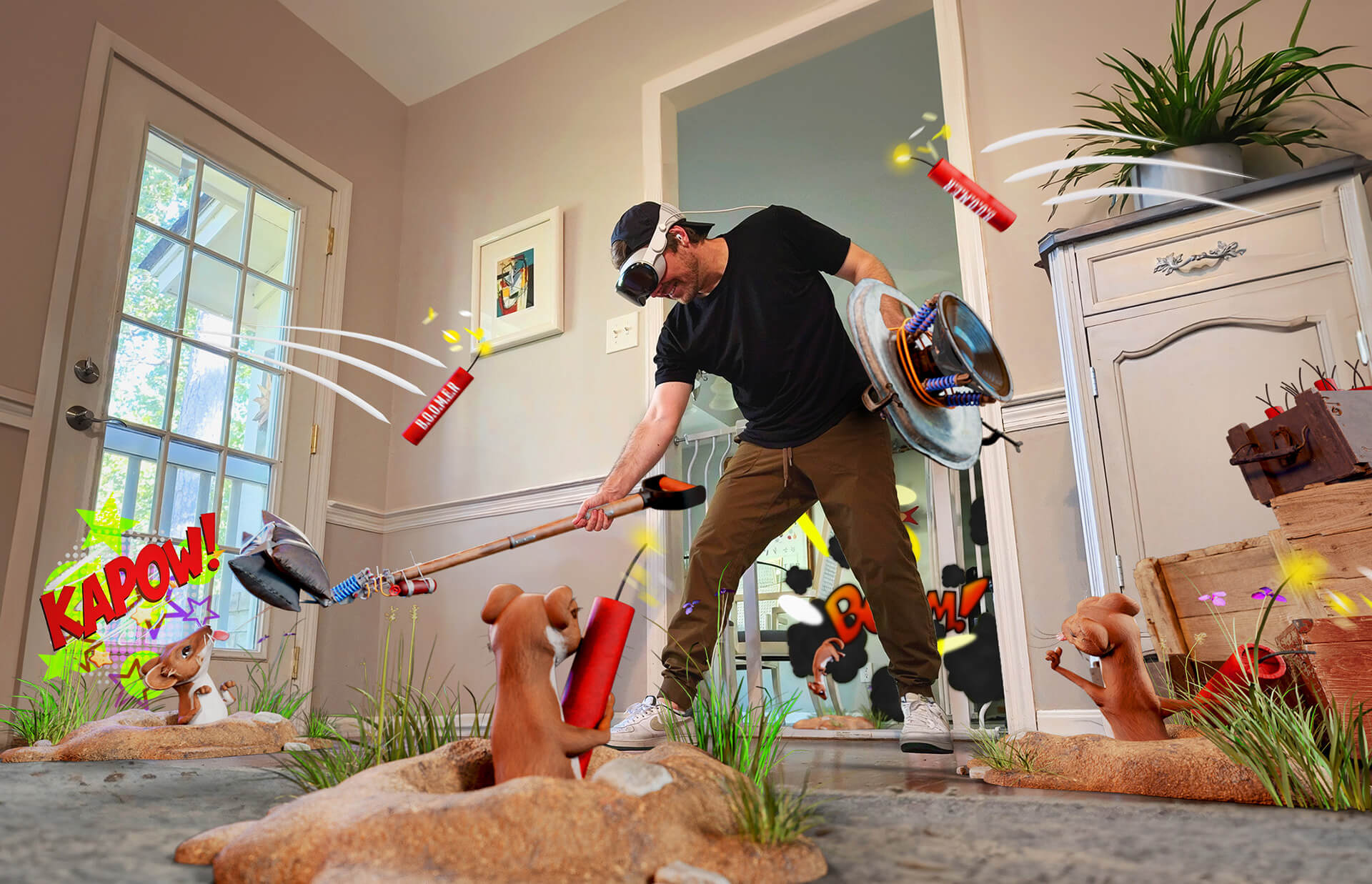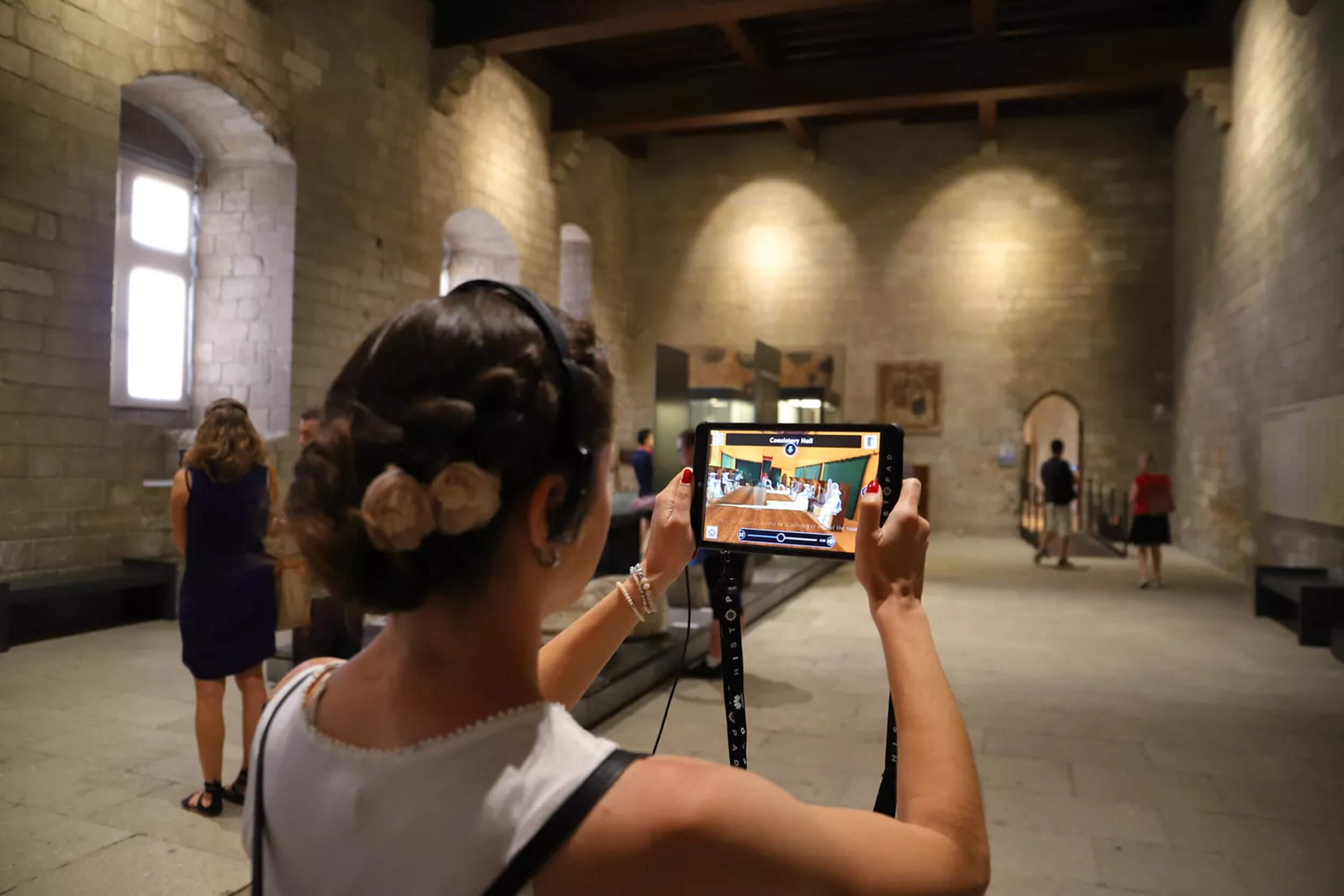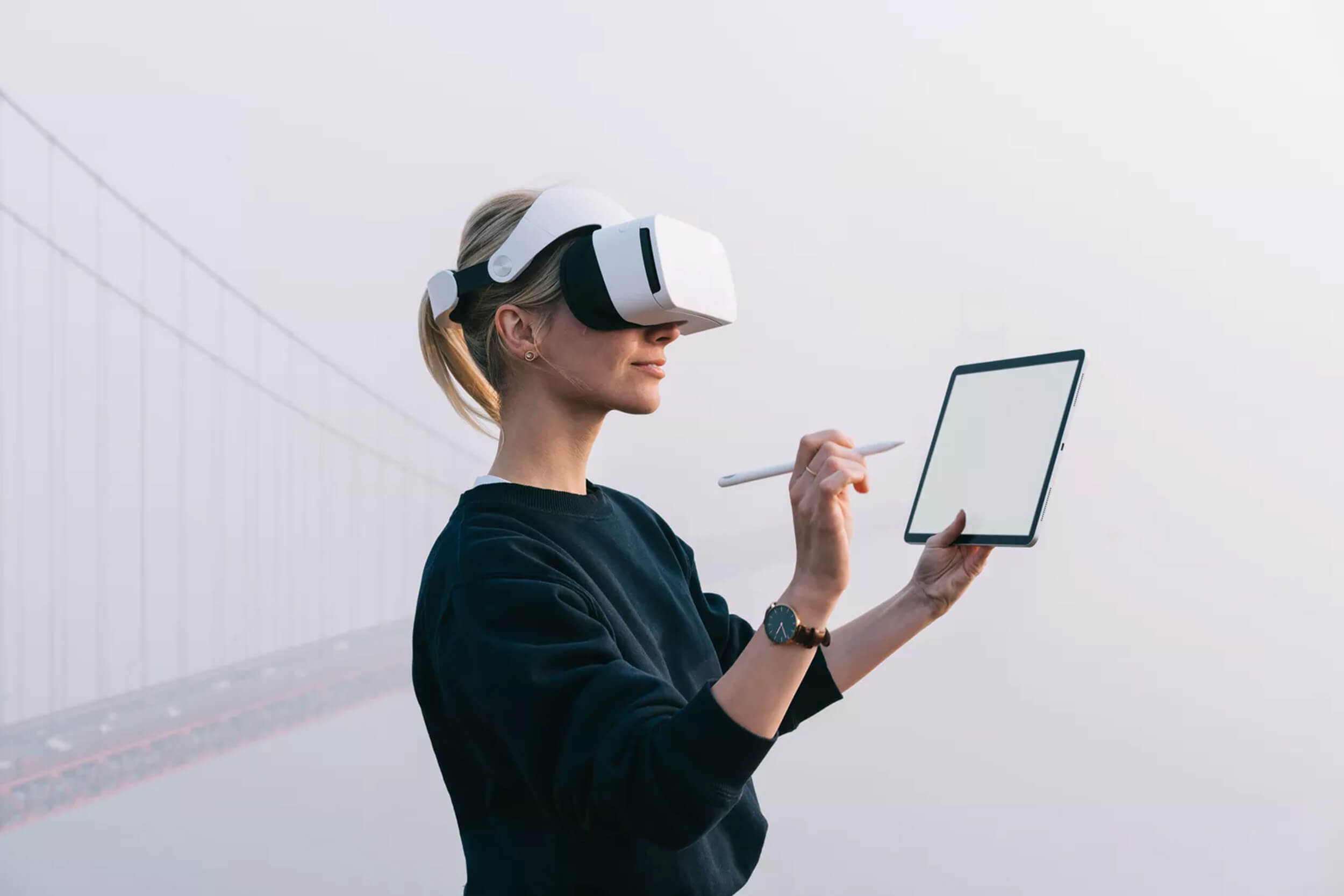Extended Reality (XR), the umbrella term for Virtual Reality (VR), Augmented Reality (AR), and Mixed Reality (MR) is used to define the concept of “extending” or transforming our reality with the use of technology to create immersive environments, experiences, and interactions.
XR tech takes the human-machine interface and modifies it, either by immersing you in the virtual environment (VR), adding to, or augmenting, the user’s surroundings (AR), or both of those (MR). While extended reality use cases have been humming along, the pandemic served as the catalyst for an explosion of XR use cases during 2020 and 2021, accelerating the rollout of virtual experiences for work and collaboration.
From retail to healthcare to education and training to the food sector, extended reality applications are vast and increasing, with experts expecting this technology to radically alter how we work, live, and play, and market size to rocket to a staggering $300 billion by 2024.
Understanding Extended Reality Better

Source: Shutterstock
“A mind that is stretched by a new experience can never go back to its old dimensions.” — Oliver Holmes, Jr.
To better understand Extended Reality (XR), let’s briefly run through its three main components: Virtual, Augmented, and Mixed Reality.
Virtual Reality
Virtual Reality (VR) applications use headsets to fully immerse users in a computer-simulated reality. These headsets generate realistic sounds and images, engaging all five senses to create an interactive virtual world.
Augmented Reality
Rather than immersing users, Augmented Reality (AR) relies on a device – usually the camera in your phone or tablet – to overlay digital graphics and sounds into a real-world environment. For instance, you could be at a live sports event and see a digital statistics overlay hovering over the players, or videos of replays or interviews.
Mixed Reality
Mixed Reality (MR) lies somewhere in between VR and AR. It blends real and virtual worlds to create complex environments where physical and digital elements can interact in real-time. You see the surroundings as in AR, yet the headset produces 3D imagery with interactivity and depth as in VR. Like AR, it overlays virtual content over a real-world environment; and like VR, this content is interactive, and users can manipulate the digital objects in their physical space.
Even in an otherwise highly volatile economy, XR appears to be thriving. From digital training simulations to remote experience technologies that link spaces and people across the globe – XR is driving change in every sector, across all markets and industries.
Let’s chat
Not sure where to start? Book a free strategy call with us to get started! No strings attached.

10 Applications of Extended Reality
Imagination is infinite, and by creatively combining XR technology with our imagination, new frontiers will open up. That said, several XR applications already have huge social relevance and impact.
1. Entertainment and Gaming
XR for entertainment and games may sound light, but this currently constitutes the number one market segment, with the XR gaming market on track to reach $18 billion by 2023.
Gamers can intimately feel what their selected scenes would resemble in the flesh, whether crossing into another era, place or exploring fantastic futuristic worlds. Consumers can virtually experience live music and sporting events from the comfort of their VR headsets.
More and more gaming developers are launching their own virtual reality headsets. And given the hyper-competitive nature of the gaming industry, it’s highly likely that VR gaming will continue to develop in an extraordinary innovative way.

Source: Shutterstock
2. Healthcare
Experts see multiple areas where VR technology can contribute to healthcare, including mental well-being, physiotherapy, pharmaceutical development, and education for professionals and patients. The technology also assists in collaboration, especially among multiple facilities. During the pandemic, doctors used XR extensively to offer remote care.
Medical imaging technologies like magnetic resonance imaging (MRI) and CT scans now make extensive use of extended reality. It gives staff full 3D representations of human bodies rather than traditional 2D imaging. This improves diagnostic accuracy, as medical personnel now have a more accurate rendering of the relevant structures.
Surgical training marks one of the stand-out applications of XR. Immersive models allow doctors to practice skills without risking lives – to learn general surgical techniques or even to develop procedures for complex operations. During live operations or patient care, medical staff can use AR to make better decisions and offer more insightful recommendations to their patients. With medical VR treatment, people can experience a controlled environment where they face and overcome their fears safely.
3. Engineering and Manufacturing
A skilled workforce has become necessary to keep pace in the super-charged business world, with training a necessary yet expensive endeavor. XR tools can save money, time, and prevent injuries.
Computer-aided design (CAD) makes an ideal use case as designers and their clients can immerse themselves in life-size plans while drafting. This allows for superior exploration of design space.
Engineering and manufacturing can sometimes involve dangerous functions. The use of augmented reality enables workers to conduct these actions from a safe distance. For instance, an employee can direct a robot to perform some tasks involving hazardous chemicals that pose a risk.
New factory employees can learn how to use risky equipment via simulations and from anywhere. A job simulator can even include accurate deadlines, distractions, and other pressing demands.

Source: Shutterstock
AR can also assist in other processes like assembly, quality control, and maintenance. Workers receive visual and voice instructions as well as seeing data on a smartphone, headset, or other hardware. It can include precise technical data such as tolerances or coatings. From Boeing to Porsche to Lockheed Martin, AR is being leveraged to drive productivity along key stages of the production process.
4. Food
The food industry is vast and diverse. Whether that be streaming training content, mimicking food production processes virtually, or simulating real-life scenarios — XR offers a new way of looking and doing things. Some restaurants, for example, now offer placemats that can transform into gaming platforms and recipe books.
Proper hygiene in food facilities is one of the most important aspects of food production. Manual inspection routines are susceptible to human error or lack of oversight. With mixed reality devices such as HoloLens, it is possible to add a digital layer to any form of maintenance or service like a routine hygiene inspection. The digital layer can highlight critical areas that can be overlooked with manual processes, ensuring all important areas are covered.
You can even add a no-oversights feature that means a worker cannot move on to the next step until all necessary steps have been completed. Additionally, HoloLens can capture content and store it in a database, meaning improved traceability of hygiene inspections, a key focus area for food operators.
The retention of skills and knowledge learned via VR is very high, meaning it is more likely to be applied in the workplace, ultimately leading to increased productivity. Even complex techniques can be broken down into their most basic components to make certain that even the newest employee can grasp and deliver consistent, high-quality output.
Using VR, any task in a production facility can be copied virtually and can be reviewed at a pace most comfortable to the employee. In addition, VR-learning doesn’t require help from other colleagues, meaning new employees can be trained without the need for other employees to take time to teach. With visual guides, a worker should be able to pick up the next steps. Further, the instructions can easily be read in different languages.
Keep up to date
Sign up to our newsletter for exclusive updates and content, delivered directly to your inbox.
5. eCommerce and Retail
AR contributes to both online and offline shopping. In stores, customers can quickly and easily learn all about products on display. You can, for instance, instantly find reviews and recommendations just by pointing your camera at an AR-enabled item. Retailers can also offer discounts through this medium while uncovering shopping patterns in the data.
For e-commerce, AR brings the shopper closer to an in-person experience – especially during the pandemic. People generally want to interact with a product before buying, and this technology allows them to do so.
Product returns can cost as much as $550 billion per year. People often buy a product based on a stock photo, but when they receive it, they realize it’s not what they imagined. AR eliminates this frustration. By allowing customers to experience the product in an augmented world, they sense first hand whether they will like it or not. Retail giant Macy’s “try before you buy” AR product visualization helped the company reduce return rates to less than 2%. Famous retailers from Saks to Saatchi have also rolled out immersive shopping experiences.
Studies show that 47% of consumers acknowledged that immersive technologies make them “feel more connected with products” while shopping online. Rather than forcing a consumer to imagine how a product will look, AR allows the user to experience the product firsthand, in a digital environment.
6. Education
The National Education Association has found that while the learning retention is only 5% for lectures and 10% for reading, VR is among the top 2 with learning retention of 75%. With immersive technology, learning can be made much more engaging than simply reading a piece of text or watching a video.
Augmented reality gives students hands-on, real-world experience without the need for a classroom. It enables people to see what it’s like in outer space or to practice surgery on virtual patients. XR delivers unique learning experiences and is expected to have a growing influence on education at all levels from elementary to tertiary, to professional learning.
XR enables virtual field trips, including to locations that you can’t reach in person. You can also explore complex scientific topics in extreme detail, like manipulating a 3D model of a molecule. When it comes to post-secondary, XR enables remote self-paced learning. Students can have multisensory engagement with any topic from astronomy to zoology. Richer interconnections make the material more memorable. Gamification, in which lessons are made entertaining, can further enhance learning outcomes.
7. Real Estate
Real estate agents can give prospective buyers a tour of properties as if viewing them in person, even if they are on opposite sides of the planet. You can produce advertisements, sales presentations, and detailed open houses for use with smartphones or headsets. Real estate agents already exploit XR’s core functions with current tools already built into some web browsers.
8. Workplace
Hybrid work, remote employees, 4-day work week; the pandemic has triggered a series of new workplace arrangements. Executives see extended reality as an effective method to reconnect employees. It brings new opportunities for on-the-job training too, helping employees learn as they go, getting hands-on experience in a safe and controlled environment, enabling them to be more efficient.
Logistics giant DHL rolled out its Google Glass-based Vision Picking Program in its warehouses in nine countries, reporting productivity savings of 15% through more accurate and efficient fulfillment. Lloyds Bank is investing in VR technology to train their staff in soft skills, helping employees learn to develop resilience and cope with stress.
9. Defense
“This is cutting-edge technology. It’s going to transform the way we train soldiers and the way soldiers operate in combat. We’re excited about it,” is how Gen. James McConville, the US Army’s chief of staff, describes XR.
Since the inception of XR technologies, the US Military has invested billions of dollars in the technology. The Army and the Marine Corps have invested in a new battlefield head-up display called the Integrated Visual Augmentation System (IVAS), which combines synthetic training environments with real-world data to boost infantry readiness and effectiveness. The Navy and Air Force have been using similar XR technologies to train their fighter pilots.
The US Defense Department readily extols the boundless promise that XR advances hold for dramatically improved training, situational awareness, logistics support, combat readiness, and even medical training and procedures. XR can deliver training far faster and at less cost than traditional training in many cases. By employing virtual reality, artificial intelligence (AI), and biometric tracking, the US Air Force has reduced pilot training from 12 months to four.
By superimposing virtual data over a view of the real world, military personnel can use XR technologies to navigate more easily across any terrain in the world; know the location of friendly troops or reported threats; train and rehearse for anticipated battle scenarios, and even overlay virtual enemies and obstacles as needed for better preparation.
10. Travel and Tourism
The unprecedented and disastrous pandemic impacted nearly every sector of the economy, with the travel and tourism industry hit particularly hard. The United Nations Conference on Trade and Development (UNCTAD) estimates that the sharp decline in international tourism during the pandemic has slashed more than $4 trillion off the global GDP.
Because so many people still aren’t willing to travel, smart operators are using extended reality to offer stay-at-home travel experiences. This benefits both consumers and the tourism industry. Extended reality tourism gives consumers the opportunity to travel the world safely and at a fraction of the cost. This technology also creates a new revenue stream for companies struggling to stay afloat.
In Jordan, for example, the government launched the Petra Xplore App, which uses virtual reality technology to teleport visitors to the UNESCO World Heritage Site. Visitors can walk through and explore points of interest. As users explore the city, commentary helps them understand the historical significance.
Industry experts believe, even post-pandemic, that extended reality tourism will continue to appeal to tourists who are looking for an inexpensive way to travel the world.
Leverage The Use of Extended Reality Now
Extended reality advances the potential of AR, VR, and MR and merges our real and virtual worlds to create new environments and visualizations where physical and digital objects co-exist, interact, and communicate. Instead of removing users completely from the real world, or simply layering flat content on top of their immediate view, MR adds intelligence, even personality, to digital content relative to the world around them.
As part of the technological evolution of how we engage with the digital world, in both our personal and work lives, we are smashing through the barriers that interfere with our ability to make smart decisions quickly, absorb, retain and process critical information, visualize possible scenarios before acting, or share knowledge and tasks. The XR trend is ushering in a new world of simulated experiences grounded in the ways business gets done and how customers actually use products.
If you plan to effectively leverage the immense power of extended reality, choosing the right partner is critically important. You need to work with an experienced agency that not only has a stellar track record but one that has a firm grasp of the technical know-how of these immersive technologies, as well as the capability to creatively bring your vision to life and solve real-world problems.
Rock Paper Reality (RPR) has been at the forefront of AR development for over 12 years. Having worked with clients including Microsoft, Netflix, and Lenovo, the experts at RPR will work with you every step of the way to ensure that your brand stands above the competition.
Contact us today for a free demo and discover how our clients have achieved strong ROI with our proven solutions. Watch the RPR showcase reel for some more AR experiences in action.
